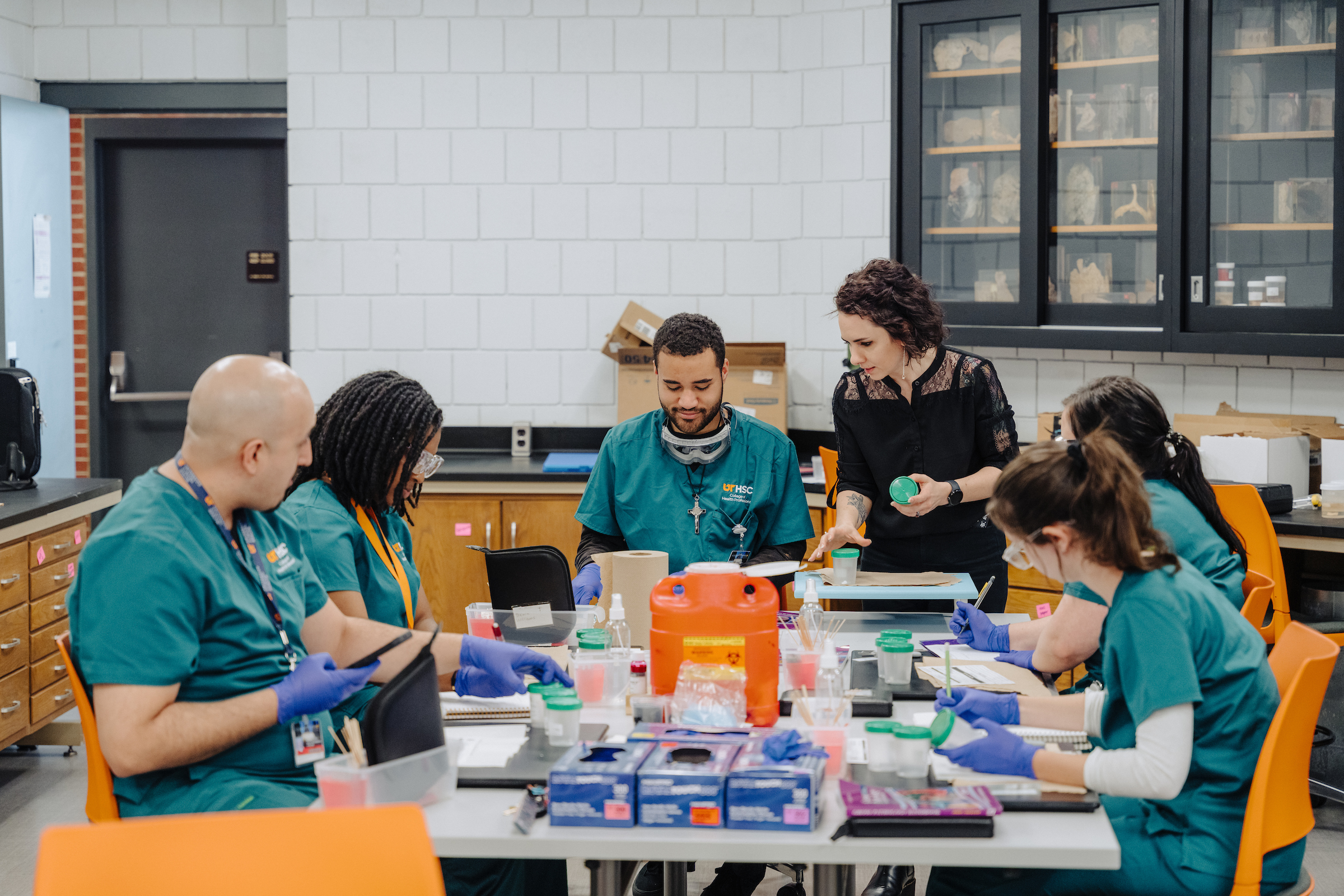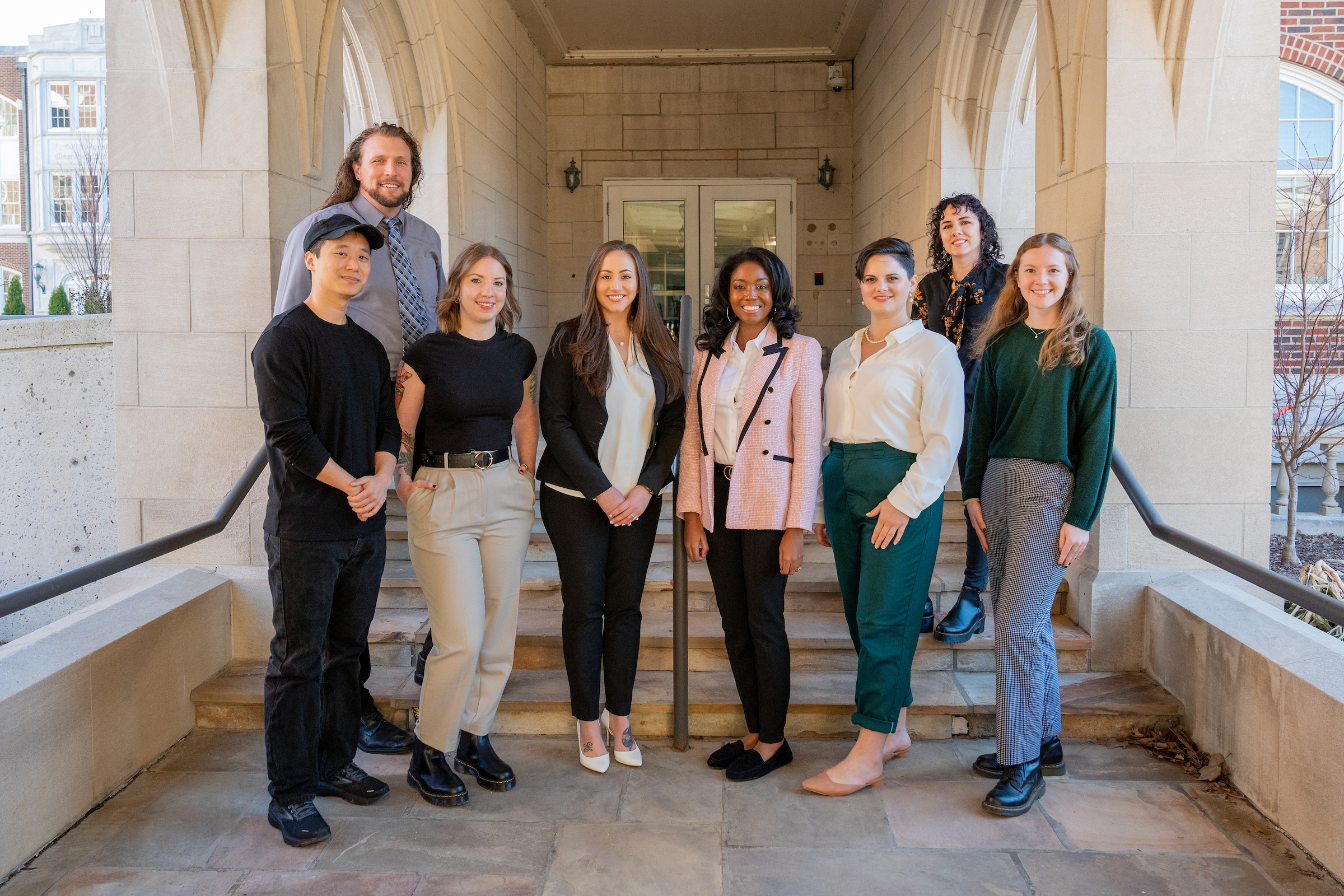Pathologists' Assistant Program
Mission Statement
The mission of the UT Health Science Center Pathologists’ Assistant program is to produce proficient entry-level Pathologists’ Assistants. Graduates will be equipped with the expertise demanded by the profession, enabling them to transition into roles within the gross room, autopsy suite, laboratory management, research, forensics, and education. We instill competency through comprehensive didactic and clinical experiences, ensuring our graduates are prepared for the diverse challenges and responsibilities they'll encounter as certified Pathologists’ Assistants.
What is a Pathologists' Assistant?
A pathologists’ assistant (PA) is a highly trained allied health professional who provides various services under the direction and supervision of a pathologist. Pathologists' assistants interact with pathologists in a manner similar to physician’s assistants in surgical and medical practice, carrying out their duties under the direction of their physicians. PAs are academically and practically trained to provide accurate and timely processing of a variety of laboratory specimens, including the majority of pathological specimens. PAs are key components to helping make a pathologic diagnosis, but it is the sole province of the pathologist to render a diagnosis.
Pathologists’ assistants perform in a wide scope of clinical practices. Although the majority of pathologists’ assistants work in academic and community hospitals, PAs can also be employed in other areas such as private pathology laboratories, forensic pathology laboratories and morgues, reference laboratories, government healthcare systems, and medical teaching facilities. Some PAs are even self‐employed business owners providing their pathology expertise via long‐ _and short‐term contract.
Pathologists' assistants contribute to the overall efficiency of the laboratory or pathology practice in a cost-effective manner. With increased pressure on healthcare systems to control costs, the demand for qualified pathologists' assistant is growing every year.” (NAACLS Standard VIII)
You can learn more about the Pathologists' Assistant profession by visiting American Association of Pathologists' Assistants (AAPA).
Application Timelines:
Current application cycle (classes start in January 2026):
- Application opens: January 1, 2025
- Application closes: May 31, 2025
Next application cycle (classes start in January 2027):
- Application opens: January 1, 2026
- Application classes: May 31, 2026
About the Program

The Pathologists’ Assistant program at UTHSC is a professional entry-level master’s
degree program that culminates in the awarding of a Master’s of Health Science (MHS)
in Pathologists’ Assistant degree and will prepare students for the American Society
of Clinical Pathology (ASCP) Board of Certification exam.
In 2018, the College of Health Professions began diligently developing a Pathologists’
Assistant program in the Department of Diagnostic Health and Sciences. In July 2021,
the Program Director was hired to guide the program through the rigorous Tennessee
Higher Education Commission (THEC) approval process. The THEC approval process required
complete documentation of UTHSC’s ability to support a new academic program, thorough
review of the new curriculum, and a site visit by an independent professional in the
field. The UTHSC Pathologists’ Assistant program received final THEC approval on
July 28, 2022. The program is seeking national accreditation by the National Accreditation
Agency for Clinical Laboratory Sciences (NAACLS) and had their Initial Application
approved in May 2023. The first cohort of 6 students began classes in January 2023
and will graduate in December 2024.
The UTHSC campus is located in the heart of the Memphis Medical District, surrounded
by more than a dozen teaching and research hospitals, colleges and healthcare laboratories.
The campus is located just two miles from the Beale Street Historic District.
What makes the UTHSC Pathologists’ Assistant Program Unique?
- The UT Health Science Center has provided the Pathologists’ Assistant program with a program-specific training space for the hands-on instruction of anatomical grossing techniques and frozen section.
- All didactic coursework taught by ASCP certified and NAACLS program-trained Pathologists’ Assistants (see faculty profiles). The programs faculty received training from different training programs, providing a diverse input into the curriculum.
- 8 months of surgical and autopsy pathology didactic instruction during the first year of the program, including hands-on instruction in our Anatomic Pathology Gross Training Laboratory.
- Extensive hands-on training in the human anatomy cadaver lab taught by Pathologists’ Assistant faculty members, with low student to cadaver ratios.
- First-year students must display competency at cutting frozen sections prior to clinical rotations! All students will be able to cut a diagnostic quality frozen section with 7 minutes or less.
- All second-year students will receive a minimum of 48-weeks of diverse clinical rotations in surgical and autopsy pathology.
- Second-year forensic medical examiner clinical rotation for all students (link to list of clinical affiliates)
- Through the Southern Regional Education Board’s (SREB) Academic Common Market, students residing in certain states without Pathologists’ Assistant programs may be eligible for in-state tuition. These states include AL, AR, DE, FL, GA, KY, MS, and OK. For more information on the Academic Common Market, visit the SREB.
- Classes are not taught on Fridays during the first year of the program!

